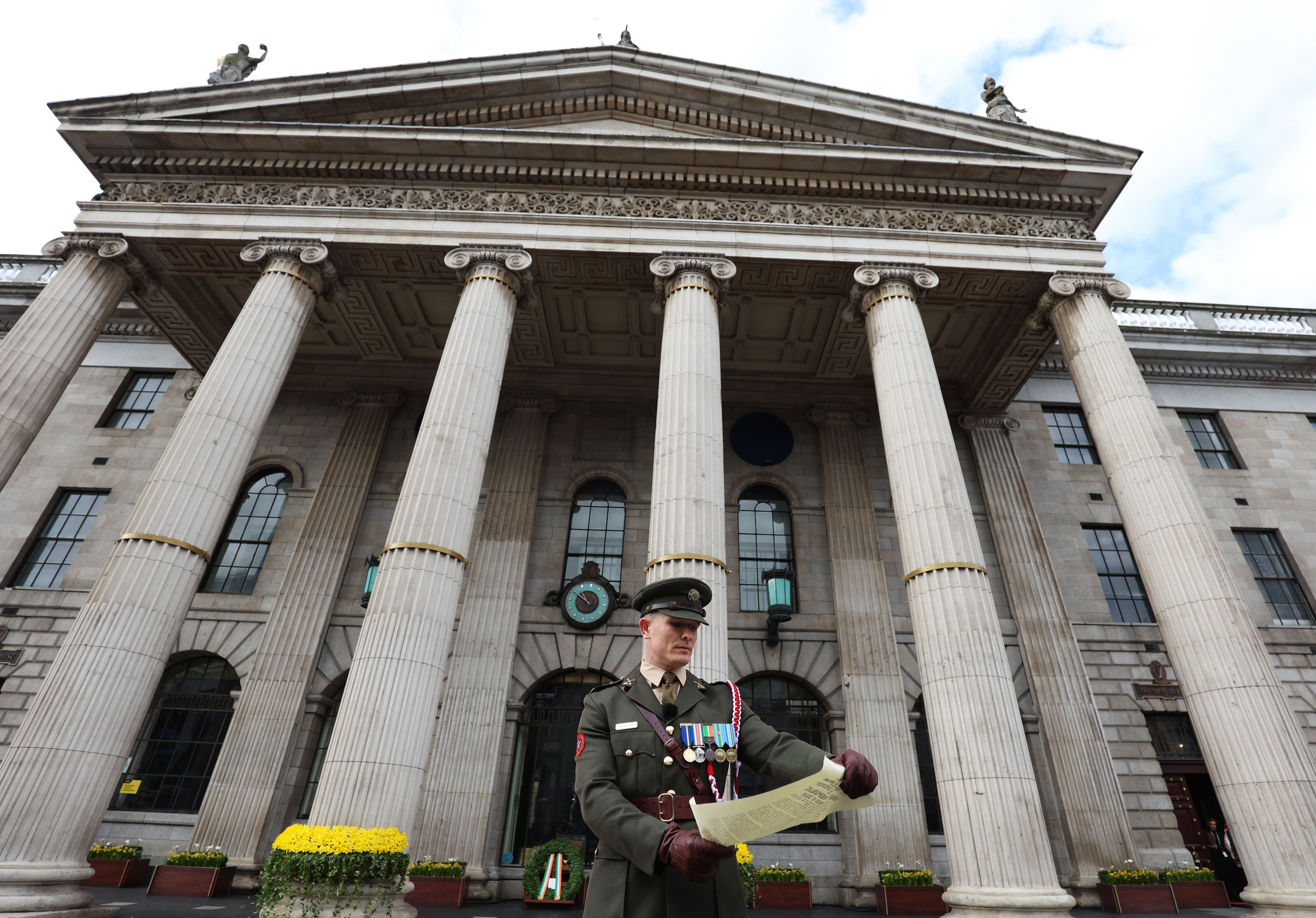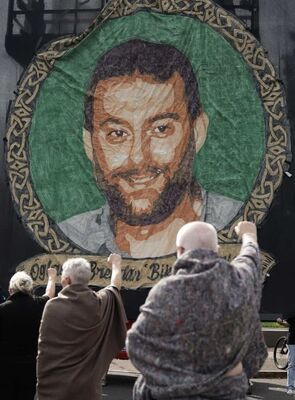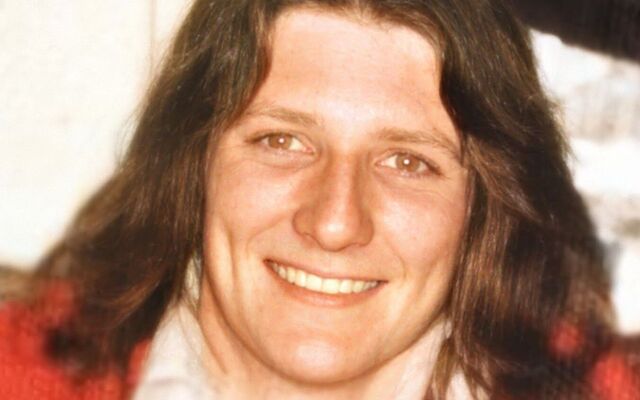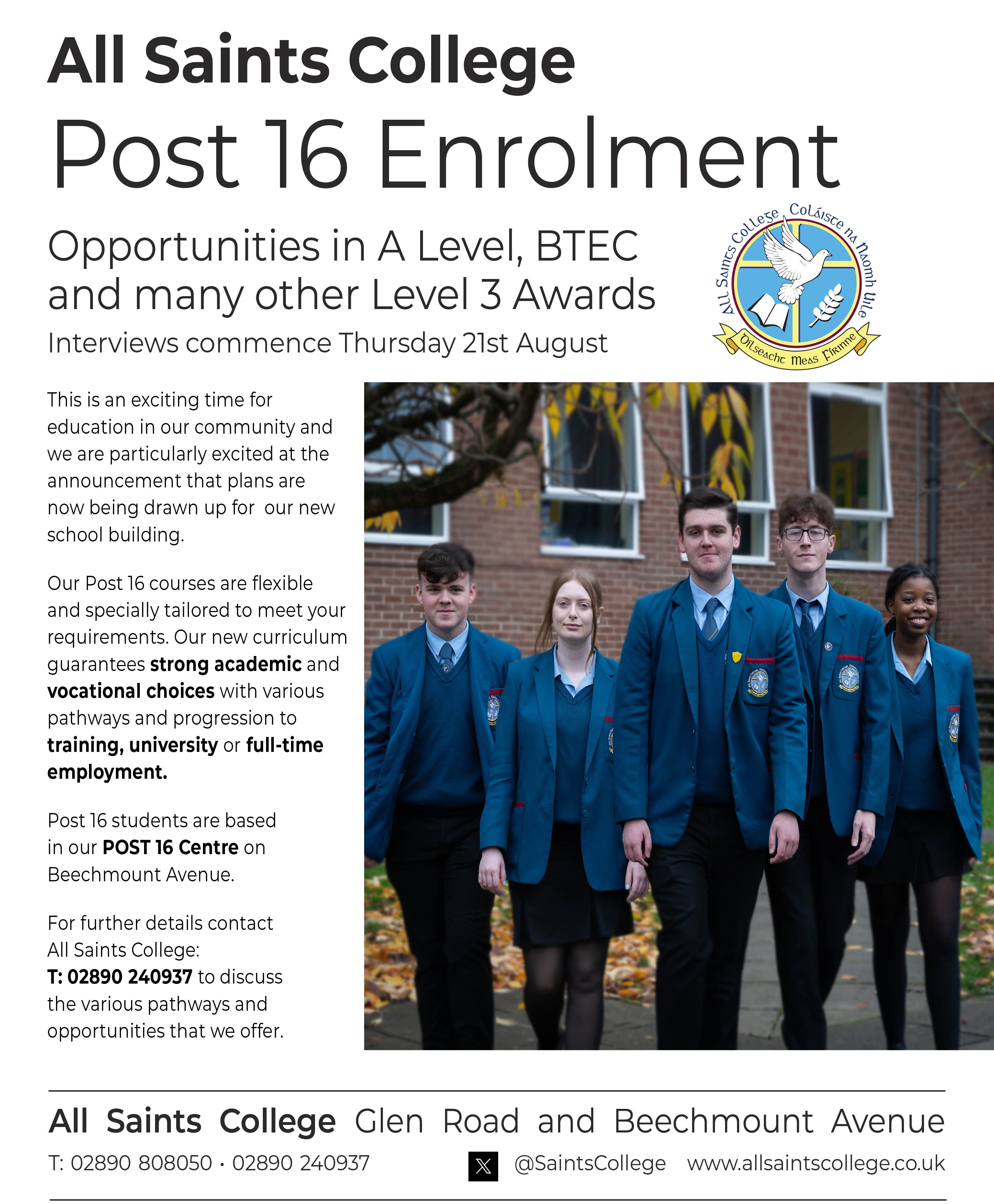THE Dublin GPO and the streets and laneways around it are forever linked with the Easter Rising of 1916. This is a battlefield site of major historic and international significance which successive Irish governments have failed to develop properly. Successive promises of investment and planning in Moore Street have come to nothing. Successive governments have reduced the National Monument to four houses, leaving the rest of the historic area to be destroyed by a London based developer.
In keeping with this shameful approach, the Irish government last week published a 10-year plan which will see the GPO become a mixed-use development. The spin from government is that the GPO will become a flagship project, including retail and office components with a Designated Activity Company being established. The reality, as we have seen with the Moore Street plan, is that time and time again governments have turned their face against the preservation of our revolutionary past in favour of shopping centres and commercial developments. Private developers are given carte blanche to maximise profit at the expense of our cultural and historical heritage.
Uachtarán Shinn Féin Mary Lou McDonald TD described it well when she said the government’s proposal was “another shameful betrayal of Ireland’s proud revolutionary history.”
At the weekend Mary Lou and Pearse Doherty TD launched a public petition to 'Save the GPO'. The petition calls for the development of a 1916 Cultural Quarter in the area around the GPO, O’Connell Street and Moore Street and the implementation of the Moore Street Preservation Trust plan. Mary Lou said: “It is incredible that they want to turn one of the most iconic sites of Ireland’s struggle for freedom into shops and office space. This is the building outside which Pádraig Pearse in Easter 1916 read the Proclamation of the Irish Republic. These streets in this area are the physical environs of one of the seminal chapters in Ireland’s long fight for independence.”
In the course of my travels I have visited many places of historic importance to the people of South Africa, of the USA, of France and elsewhere. Can you imagine the demolition of Robben Island prison where Nelson Mandela and the political prisoners resisted the apartheid regime? Or Independence Hall in Philadelphia where the Declaration of Independence and the United States Constitution were debated and adopted? Or the Tower of London? Of course not. Other states and other people take pride in their history.
The importance of the site of the last battle of the 1916 Rising was underlined by the High Court in Dublin in 2016 which described Moore Street as unique. The court described Moore Street as “the place to which the men and women of the GPO fled, where battle was done and surrender was negotiated, and a site where workers, civilian and combatant, lived and died in what was, to a large extent, a workers’ rising.”
In any other city in the world we would see visionary, ambitious plans to develop the site, preserving our history with a national museum, arts and culture, education, tourism and homes to make it a living, breathing area.
So, join the battle to Save the GPO and Moore Street Sign up to the petition and support the campaign of the Moore Street Preservation Trust for a modern historical quarter – shaped around the GPO, the Moore Street Battlefield site and O’Connell Street. The link is: https://outreach.sinnfein.ie/save-the-gpo/
Kneecap abú
WELL done to Kneecap and those other performers at Glastonbury who stood up to the British political and media establishment and courageously spoke out against the Israeli genocide in the Gaza Strip and the West Bank. Well done also to the tens of thousands who applauded and cheered as Mo Chara, Móglaí Bap and DJ Próvaí demanded ceasefires, an end to the mass murder of Palestinian people and stood up to the censorship of the British Broadcasting Corporation.
The British political and media establishment, in particular the BBC, like to promote an image to the world of being progressive, anti-racist, truthful and democratic. The experience of Ireland and of many states that were once British colonies is the opposite. British rule has always been bad for Ireland. Perfidious Albion’s intrusion into our affairs has been a part of our historical and cultural narrative for almost 900 years.
Censorship and racism and the demonisation of those who confront British strategic interests have been a constant from the ape-like caricatures of the Irish in the 19th century to the control of the media as part of the state’s counter-insurgency strategies during the recent years of conflict.
So too with the hypocrisy of Starmer's government. He provides material, economic, military and political support to Netanyahu’s fascist government. And he has the audacity to pick again on Kneecap and others after the success if their Glastonbury gig at the weekend.
Formal and informal political censorship often creates a climate of fear in which many good people turn away from the truth. Fortunately, there are always those who will dare to speak out. People like the late Mary Holland, who interviewed me in April 1990 when the voices of Sinn Féin activists were banned. Mary so perfectly lip-synched my words, using Oscar-winning actor Stephen Rea, that the British demanded that lip-synching itself be banned. Or Helen from Wales, a vegan chef and yoga teacher, who on Saturday live-streamed Kneecap’s set on Tik Tok while the BBC banned them. Or those who use their social media platforms to expose the lies, inhumanity and excesses of states, even at the risk of their own lives.
Censorship is the enemy of truth. It reinforces the conditions for division and conflict. It is an obstacle to dialogue. Dialogue is essential for understanding and agreement and reconciliation.
Féile an Phobail – a festival extravaganza
THIS week I was given a copy of the minutes of a meeting held on June 22, 1902, in the Catholic Boys' Hall on the Falls Road to establish a league for junior hurlers. So far I have three locations for this hall. One is off Dunlewey Street, not far from the Sinn Féin office and the Bobby Sands mural. The other is in Cavendish Square, and the last one is up one of the Rock Streets. My guess is that all these venues were used at different times.
The Clubs involved in the 1902 meeting were: Michael Dwyer; Geraldines; Éire Óg; Sarsfield; Brian Boru; Oissin; Fianna Éireann; and Red Branch. Bulmer Hobson was elected Chairman of the League. Hobson was a well-known republican figure. Two years after this meeting he was sworn into the Irish Republican Brotherhood and along with Countess Constance Markievicz, he founded Na Fianna Éireann in Belfast in 1909.
The minute records that following his election Bulmer Hobson gave a “neat little speech bringing before their minds the necessity of forming such a league and that it will bind them closer together and be a means of spreading the game and doing a little towards the revival of this old Irish sport.”
123 years later Hobson’s vision of a revival of "this old Irish sport” means that An Chumann Lúthchleas Gael (CLG) in Belfast will play a prominent role during this year’s Féile an Phobail. Its presence permeates the programme for 2025, which has just been launched.
Once again Féile has surpassed itself. with over 600 events at over 50 venues. These will cover everything from the visual arts, culture, discussions and debates, exhibitions, tours, films, ceol and sports.
On Monday, July 28, Naomh Eoin CLG will host an event organised by Gaels le Chéile. Jane Adams, one of its founding members, will provide an update on the work of the campaign. It will be followed by a conversation with sports journalist Brendan Crossan and Tyrone football legend Peter Canavan.
On Thursday, July 31, in the Ulster Museum the influential role of the GAA will be evoked through objects: medals passed down from generation to generation. Siobhan Doyle who wrote 'A History of the GAA in 100 Objects' will be on hand to talk about the exhibition.
On August 2 there will be the annual Joe Cahill Gaelic U12. On the same day at Corrigan Park there will be two friendship matches between Ireland and Scotland using composite shinty and hurling/camogie rules.
In his book, 'Lost Gaels', Peadar Thompson provides a comprehensive account of the lives of 92 of the estimated 150 women, men and children who had connections to the GAA and who were killed during the years of conflict. His talk will be on August 4 in St Mary’s University College.
On Saturday, August 9, at 9am the famous Féile an Phobail Poc Fada will take place on the Divis and Black Mountain. I retired recently as the undefeated Féile Poc Fada champion, beating Brian McFaul in the process.
Also on that same day a half-pace social hurling festival will take place on Rossa and Sarsfields pitches with 16 teams from all over Ireland playing in a blitz. And the Naomh Gall Siobhan O’Hanlon Gaelic for Mothers and Others blitz will also take place in De La Salle Park, Milltown. The blitz is named in honour of our friend and founding member of Féile.
Those who gathered in June 1902 would be pleased.
Check the Féile clár. If you haven’t got a hard copy then you can access it on the Féile website.





